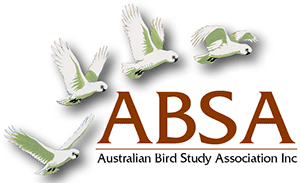Breeding events and success of Yellow-billed and Royal Spoonbills in Victoria
| Posted: |
01/07/2025 |
| Author(s): |
Kim W. Lowe |
Abstract. Two species of spoonbills occur in Australia: the Yellow-billed Spoonbill Platalea flavipes and the Royal Spoonbill P. regia. The biology of these species is poorly known with only a handful of studies on breeding by Royal Spoonbill and no published studies of breeding by Yellow-billed Spoonbill. Australian waterbird populations have significantly declined over the past 40 years and in response water management authorities are increasingly focussing on environmental watering. Basic ecological data on water-dependent target species, such as the spoonbills, from across their range is required. To fill this knowledge gap, breeding events, clutch size and success of Yellow-billed and Royal Spoonbills in Victoria were studied in the field at four locations between 1981 and 1984. In addition, records of breeding in Victoria collected by others were collated from the publicly available databases, Birdlife Australia’s Birdata, Cornell University’s eBird and the Atlas of Living Australia to provide a broader overview of breeding events. Royal Spoonbill nested in loose colonies, whereas Yellow-billed Spoonbill nearly always nested alone. They laid eggs between October and May and this varied between years and location. The modal clutch size was three for both species and from 128 clutches of both species 153 fledglings were produced. Yellow-billed Spoonbill breeding was more successful, lasted longer and fledged more broods of two and three chicks than that of Royal Spoonbill. Online data sources (observations made mostly by volunteers) recorded breeding at 59 sites across Victoria between 1979 and 2024. Both species were recorded breeding together at a minority of sites and occasionally in the company of Australian White Ibis Threskiornis moluccus and Straw-necked Ibis T. spinicollis. Yellow-billed Spoonbill was recorded breeding at more sites than Royal Spoonbill, but the total number of nests reported was an order of magnitude higher for Royal Spoonbill than for Yellowbilled Spoonbill. Spoonbills of both species bred at 12 urban sites, the first report of this kind. The earliest record of urban breeding was in 2006 at the end of the Millennium Drought. The interaction between conditions at the breeding sites, timing of breeding and breeding success are discussed in relation to food availability and predictability and postbreeding movement patterns. More monitoring, especially at the many small ephemeral wetlands where they breed, is recommended as is further use of satellite tracking, especially for Yellow-billed Spoonbill, and at breeding sites outside the southern Murray-Darling Basin.
>> Download Abstract |
File Size: 210 KB
MEMBERSONLY
